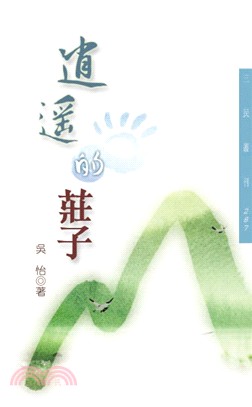The Reading Teacher's Book of Lists
- ISBN13:9780787982577
- 出版社:JOHN WILEY & SONS;LTD
- 作者:FRY
- 裝訂/頁數:平裝/544頁
- 規格:27.9cm*22.2cm*3.8cm (高/寬/厚)
- 版次:5
- 出版日:2006/03/31
相關商品
商品簡介
作者簡介
目次
商品簡介
The definitive reference for reading and literacy from kindergarten through college
This comprehensive fifth edition of a bestselling classic offers an unparalleled source of timely, practical information on all aspects of reading instruction. Ready for immediate use, it offers over 190 up-to-date lists for developing instructional materials and lesson planning. The book is organized into 15 convenient sections full of practical examples, key words, teaching ideas, and activities that can be used as is or adapted to meet students' diverse needs. New topical areas include: ideas for non-narrative reading; word walls; graphic organizer and concept development software; new literacies, such as 'zines, Internet terms, emoticons, e-mail, and chat; as well as weekly writing prompts.
Edward Bernard Fry, PhD (Laguna Beach, CA), is Professor Emeritus of Education at Rutgers University and internationally renowned inventor of his eponymous Readability Graph. Jacqueline E. Kress, EdD (Elizabeth, NJ), is Dean of Education at New York Institute of Technology.
This comprehensive fifth edition of a bestselling classic offers an unparalleled source of timely, practical information on all aspects of reading instruction. Ready for immediate use, it offers over 190 up-to-date lists for developing instructional materials and lesson planning. The book is organized into 15 convenient sections full of practical examples, key words, teaching ideas, and activities that can be used as is or adapted to meet students' diverse needs. New topical areas include: ideas for non-narrative reading; word walls; graphic organizer and concept development software; new literacies, such as 'zines, Internet terms, emoticons, e-mail, and chat; as well as weekly writing prompts.
Edward Bernard Fry, PhD (Laguna Beach, CA), is Professor Emeritus of Education at Rutgers University and internationally renowned inventor of his eponymous Readability Graph. Jacqueline E. Kress, EdD (Elizabeth, NJ), is Dean of Education at New York Institute of Technology.
作者簡介
Edward B. Fry, Ph.D., Professor Emeritus of Education at Rutgers University (New Brunswick, NJ) where, for 24 years, he was director of the Reading Center. At Rutgers, Dr. Fry taught graduate and undergraduate courses in reading, curriculum, and other educational subjects, and served as chairman and dissertation committee member for doctoral candidates in reading and educational psychology. As the Reading Center director, he provided instruction for children with reading problems, trained teacher candidates, and conducted statewide reading conferences. Dr. Fry is known internationally for his Readability Graph which is used by teachers, publishers, and others to judge the reading difficulty of books and other materials. He is also well known for his Instant Words, high-frequency word list, and for reading, spelling, and secondary curriculum materials. He works as a curriculum author and skis and swims whenever possible.
Jacqueline E. Kress, Ed.D., is Dean and Professor of Education at New York Institute of Technology (Old Westbury, NY) where she teaches reading methods courses and works with college and school faculty in the preparation and development of teachers, educational technology specialists, and other educators. She is an experienced reading teacher and teacher educator, having taught developmental and remedial reading in urban elementary schools, and reading skills and methods courses at the undergraduate and graduate levels. Dr. Kress has designed numerous educational programs, including programs to increase P-12 students' literacy and school achievement. She is the author of The ESL Teacher's Book of Lists and coauthor of The Readability Machine (both published by Jossey-Bass).
Jacqueline E. Kress, Ed.D., is Dean and Professor of Education at New York Institute of Technology (Old Westbury, NY) where she teaches reading methods courses and works with college and school faculty in the preparation and development of teachers, educational technology specialists, and other educators. She is an experienced reading teacher and teacher educator, having taught developmental and remedial reading in urban elementary schools, and reading skills and methods courses at the undergraduate and graduate levels. Dr. Kress has designed numerous educational programs, including programs to increase P-12 students' literacy and school achievement. She is the author of The ESL Teacher's Book of Lists and coauthor of The Readability Machine (both published by Jossey-Bass).
目次
About The Authors.
Preface to the Fifth Edition.
A User’s Guide.
SECTION 1: Phonics.
List 1. Consonant Sounds.
List 2. Vowel Sounds.
List 3. The Final “E” Rule.
List 4. Double Vowels.
List 5. Sound Determined by Letter Position.
List 6. Phonics Awareness.
List 7. Suggested Phonics Teaching Order.
List 8. Phonics Research Basis.
List 9. Phonics Example Words.
List 10. Phonics Worksheet.
List 11. Phonograms.
List 12. The Most Common Phonograms.
List 13. Phonically Irregular Words.
List 14. Standalones.
List 15. Syllabication Rules.
SECTION 2: Useful Words.
List 16. Instant Words.
List 17. Primary Students’ Most Used Words.
List 18. Picture Nouns.
List 19. Homophones.
List 20. Homophone Teaching Suggestions.
List 21. Homophone Worksheet.
List 22. Homographs and Heteronyms.
List 23. Easily Confused Words.
List 24. Collective Nouns.
List 25. Mass Nouns or Uncountable Nouns.
List 26. Nonreversible Word Pairs.
List 27. Collocations.
SECTION 3: Vocabulary Builders.
List 28. The 20 Most Common Prefixes.
List 29. More Prefixes.
List 30. The 20 Most Common Suffixes.
List 31. More Suffixes.
List 32. Synonyms.
List 33. Antonyms.
List 34. Greek and Latin Roots.
List 35. Word Study Worksheet.
List 36. -Ology Word Family.
List 37. -Phobia and -Philia Word Families.
List 38. Words Borrowed from Other Languages.
List 39. French and Latin Phrases.
List 40. British and American Words.
List 41. Words Based on People’s Names (Eponyms).
List 42. Words with Multiple Meanings.
List 43. Oxymorons.
List 44. Daily Living Words.
List 45. Sesquipedalian Superstars.
SECTION 4: Content Words.
List 46. Math Vocabulary—Elementary.
List 47. Math Vocabulary—Intermediate.
List 48. Measurement System Abbreviations.
List 49. Metric System Prefixes and Conversions.
List 50. Roman Numerals.
List 51. Old Measurement Terms.
List 52. Reading Math Symbols.
List 53. Social Studies Vocabulary—Elementary.
List 54. Social Studies Vocabulary—Intermediate.
List 55. Geography Vocabulary—Elementary.
List 56. Geography Vocabulary—Intermediate.
List 57. U.S. States, Abbreviations, Name Meanings, and Capitals.
List 58. Provinces of Canada.
List 59. States of Mexico.
List 60. Science Vocabulary—Elementary.
List 61. Science Vocabulary—Intermediate.
SECTION 5: Books.
List 62. Book Words.
List 63. Genre.
List 64. Literary Terms.
List 65. Old and New Favorite Books to Read Aloud.
List 66. The Most Common Books in Libraries.
List 67. Award-Winning Children’s Books.
List 68. Books Without Words.
List 69. Predictable Books.
List 70. Sound-Awareness Books.
List 71. Rhyming Books.
List 72. Books for Word Play.
List 73. Children’s All Time Favorites.
List 74. Books for Reluctant and Developing Readers.
List 75. Kid’s Magazines for Readers and Writers.
List 76. Book List Collections.
List 77. Book Interest Arousers.
List 78. Book Report Form.
List 79. Book Report Alternatives.
SECTION 6: Writing.
List 80. Descriptive Words.
List 81. Story Starters.
List 82. Characteristics of Narrative and Expository Text.
List 83. Prompts for Expository Writing.
List 84. He Said/She Said.
List 85. Similes.
List 86. Metaphors.
List 87. Non-discriminatory Language Guidelines.
List 88. Build-a-Sentence.
List 89. Punctuation Guidelines.
List 90. Writeability Checklist.
List 91. Proofreading Checklist—Elementary.
List 92. Proofreading Checklist—Intermediate.
List 93. Proofreading Marks.
List 94. Teacher’s Correction Marks.
SECTION 7: Teaching Ideas.
List 95. Good Ideas for Reading Teachers.
List 96. Students’ Suggestions for Appealing Reading Activities.
List 97. Acitivites for Language Development.
List 98. Ways to Define a Word.
List 99. Multiple Intelligences and Reading.
List 100. Readability Graph.
List 101. Readability Score Comparisons.
List 102. Teaching with Newspapers.
List 103. One Hundred Ways to Praise.
List 104. Interest Inventory—Primary.
List 105. Interest Inventory—Elementary/Intermediate.
List 106. Student/Group Project Guide.
List 107. Working in Teams.
List 108. Teamwork Rules.
List 109. Activities for Tutors.
List 110. Reading Tips for Parents.
List 111. Games and Methods for Teaching.
List 112. Word Wall Lists.
SECTION 8: Comprehension.
List 113. New Literacies.
List 114. Comprehension Skills.
List 115. Comprehension Strategies.
List 116. Comprehension Strategy Initializations.
List 117. Comprehension Questions.
List 118. Signal Words.
List 119. Using Language to Support Comprehension.
List 120. Comprehension Thesaurus.
List 121. Persuasive Techniques.
SECTION 9: Fluency.
List 122. Fluency Elements.
List 123. Fluency and Punctuation.
List 124. Fluency Teaching Methods.
List 125. Sentence Tunes.
List 126. Oral Reading Activities.
List 127. Speech Sound Development.
SECTION 10: Study Skills.
List 128. Study Techniques.
List 129. Time Planning Chart.
List 130. Study Skills Checklist.
List 131. SQ3R Study Guide.
List 132. Graphic Organizers.
List 133. Using Computer-based Graphic Organizers.
List 134. Graph Types.
List 135. Mnemonic Device.
List 136. Problem-Solving Guide.
List 137. Test-Taking Strategies.
List 138. Library Classifications.
List 139. Dictionary Skills.
List 140. Dictionary Phonetic Symbols.
SECTION 11: Assessment.
List 141. Alternate Assessment Techniques.
List 142. English Language Arts Standards.
List 143. Analogies.
List 144. Rubrics for Writing—Primary.
List 145. Rubrics for Writing—Elementary/Intermediate.
List 146. Presentation Rubrics.
List 147. Test Words.
List 148. Important Modifiers.
List 149. Cloze Variations.
List 150. Testing Terms.
List 151. The Normal Distribution Curve.
SECTION 12: Spelling.
List 152. Spelling Demons—Elementary.
List 153. Spelling Demons—Intermediate.
List 154. Spelling Demons—National Spelling Bee List.
List 155. Spelling—Traditional Teaching Methods.
List 156. Double-Letter Spelling Patterns.
List 157. Spelling Rules for Adding Suffixes.
List 158. Plurals.
List 159. Capitalization Guidelines.
List 160. Contractions.
List 161. Compound Words.
List 162. Spelling and Pronunciation.
List 163. Common Abbreviations.
SECTION 13: The Internet.
List 164. Tips for Searching the Web.
List 165. Search Engines for Teachers and Students.
List 166. Web Sites for Reading Instruction.
List 167. Web Sites for Writers and Word Lovers.
List 168. Web Sites for Children’s Literature.
List 169. Kids’ Zines.
List 170. Virtual Reference Library.
List 171. Computer and Internet Terms.
List 172. Text, Chat, and Email Glossary.
List 173. Emoticons.
SECTION 14: English Language Learners (ESL or ELL).
List 174. Students’ Language Background.
List 175. English Sounds Not Used in Other Languages.
List 176. Problem English Sounds for English Language Learners.
List 177. Spanish Phonics.
List 178. Spanish Common Words and Phrases for Teachers.
List 179. Dichos-Spanish Proverbs.
SECTION 15: Language.
List 180. Parts of Speech.
List 181. Irregular Verb Patterns.
List 182. Basic Sentence Patterns.
List 183. Common Word Idioms.
List 184. Idiomatic Expressions.
List 185. Proverbs.
SECTION 16: Alphabets and Symbols.
List 186. Handwriting Charts.
List 187. Alphabet Letter Frequency.
List 188. Alphabet and Symbols Web Sites.
List 189. Foreign Alphabets.
List 190. Ancient Egyptian Alphabet—Hieroglyphs.
List 191. Native American Symbols.
List 192. Finger Spelling Alphabet.
List 193. Sign Language Examples.
List 194. Braille Alphabet.
List 195. Radio Voice Alphabet.
List 196. Morse Code.
List 197. Traffic Signs.
SECTION 17: Word Play.
List 198. Jump-Rope Rhymes.
List 199. Anagrams.
List 200. Doublespeak.
List 201. Hink Pinks and Jokes.
List 202. Onomatopoeia.
List 203. Palindromes.
List 204. Portmanteau Words.
List 205. Clipped Words.
List 206. Riddles.
List 207. Children’s Humor: What Kids Say.
List 208. Tongue Twisters.
List 209. Wacky Wordies.
List 210. Euphemisms.
List 211. Popular First Names.
List 212. Fun Names.
List 213. Proverbs in Disguise.
List 214. Strange Reading Research.
SECTION 18: Reference.
List 215. Reading Organizations and Journals.
List 216. Education Abbreviations.
List 217. Acronyms and Initializations.
List 218. Publishers of Reading Materials and Tests.
Preface to the Fifth Edition.
A User’s Guide.
SECTION 1: Phonics.
List 1. Consonant Sounds.
List 2. Vowel Sounds.
List 3. The Final “E” Rule.
List 4. Double Vowels.
List 5. Sound Determined by Letter Position.
List 6. Phonics Awareness.
List 7. Suggested Phonics Teaching Order.
List 8. Phonics Research Basis.
List 9. Phonics Example Words.
List 10. Phonics Worksheet.
List 11. Phonograms.
List 12. The Most Common Phonograms.
List 13. Phonically Irregular Words.
List 14. Standalones.
List 15. Syllabication Rules.
SECTION 2: Useful Words.
List 16. Instant Words.
List 17. Primary Students’ Most Used Words.
List 18. Picture Nouns.
List 19. Homophones.
List 20. Homophone Teaching Suggestions.
List 21. Homophone Worksheet.
List 22. Homographs and Heteronyms.
List 23. Easily Confused Words.
List 24. Collective Nouns.
List 25. Mass Nouns or Uncountable Nouns.
List 26. Nonreversible Word Pairs.
List 27. Collocations.
SECTION 3: Vocabulary Builders.
List 28. The 20 Most Common Prefixes.
List 29. More Prefixes.
List 30. The 20 Most Common Suffixes.
List 31. More Suffixes.
List 32. Synonyms.
List 33. Antonyms.
List 34. Greek and Latin Roots.
List 35. Word Study Worksheet.
List 36. -Ology Word Family.
List 37. -Phobia and -Philia Word Families.
List 38. Words Borrowed from Other Languages.
List 39. French and Latin Phrases.
List 40. British and American Words.
List 41. Words Based on People’s Names (Eponyms).
List 42. Words with Multiple Meanings.
List 43. Oxymorons.
List 44. Daily Living Words.
List 45. Sesquipedalian Superstars.
SECTION 4: Content Words.
List 46. Math Vocabulary—Elementary.
List 47. Math Vocabulary—Intermediate.
List 48. Measurement System Abbreviations.
List 49. Metric System Prefixes and Conversions.
List 50. Roman Numerals.
List 51. Old Measurement Terms.
List 52. Reading Math Symbols.
List 53. Social Studies Vocabulary—Elementary.
List 54. Social Studies Vocabulary—Intermediate.
List 55. Geography Vocabulary—Elementary.
List 56. Geography Vocabulary—Intermediate.
List 57. U.S. States, Abbreviations, Name Meanings, and Capitals.
List 58. Provinces of Canada.
List 59. States of Mexico.
List 60. Science Vocabulary—Elementary.
List 61. Science Vocabulary—Intermediate.
SECTION 5: Books.
List 62. Book Words.
List 63. Genre.
List 64. Literary Terms.
List 65. Old and New Favorite Books to Read Aloud.
List 66. The Most Common Books in Libraries.
List 67. Award-Winning Children’s Books.
List 68. Books Without Words.
List 69. Predictable Books.
List 70. Sound-Awareness Books.
List 71. Rhyming Books.
List 72. Books for Word Play.
List 73. Children’s All Time Favorites.
List 74. Books for Reluctant and Developing Readers.
List 75. Kid’s Magazines for Readers and Writers.
List 76. Book List Collections.
List 77. Book Interest Arousers.
List 78. Book Report Form.
List 79. Book Report Alternatives.
SECTION 6: Writing.
List 80. Descriptive Words.
List 81. Story Starters.
List 82. Characteristics of Narrative and Expository Text.
List 83. Prompts for Expository Writing.
List 84. He Said/She Said.
List 85. Similes.
List 86. Metaphors.
List 87. Non-discriminatory Language Guidelines.
List 88. Build-a-Sentence.
List 89. Punctuation Guidelines.
List 90. Writeability Checklist.
List 91. Proofreading Checklist—Elementary.
List 92. Proofreading Checklist—Intermediate.
List 93. Proofreading Marks.
List 94. Teacher’s Correction Marks.
SECTION 7: Teaching Ideas.
List 95. Good Ideas for Reading Teachers.
List 96. Students’ Suggestions for Appealing Reading Activities.
List 97. Acitivites for Language Development.
List 98. Ways to Define a Word.
List 99. Multiple Intelligences and Reading.
List 100. Readability Graph.
List 101. Readability Score Comparisons.
List 102. Teaching with Newspapers.
List 103. One Hundred Ways to Praise.
List 104. Interest Inventory—Primary.
List 105. Interest Inventory—Elementary/Intermediate.
List 106. Student/Group Project Guide.
List 107. Working in Teams.
List 108. Teamwork Rules.
List 109. Activities for Tutors.
List 110. Reading Tips for Parents.
List 111. Games and Methods for Teaching.
List 112. Word Wall Lists.
SECTION 8: Comprehension.
List 113. New Literacies.
List 114. Comprehension Skills.
List 115. Comprehension Strategies.
List 116. Comprehension Strategy Initializations.
List 117. Comprehension Questions.
List 118. Signal Words.
List 119. Using Language to Support Comprehension.
List 120. Comprehension Thesaurus.
List 121. Persuasive Techniques.
SECTION 9: Fluency.
List 122. Fluency Elements.
List 123. Fluency and Punctuation.
List 124. Fluency Teaching Methods.
List 125. Sentence Tunes.
List 126. Oral Reading Activities.
List 127. Speech Sound Development.
SECTION 10: Study Skills.
List 128. Study Techniques.
List 129. Time Planning Chart.
List 130. Study Skills Checklist.
List 131. SQ3R Study Guide.
List 132. Graphic Organizers.
List 133. Using Computer-based Graphic Organizers.
List 134. Graph Types.
List 135. Mnemonic Device.
List 136. Problem-Solving Guide.
List 137. Test-Taking Strategies.
List 138. Library Classifications.
List 139. Dictionary Skills.
List 140. Dictionary Phonetic Symbols.
SECTION 11: Assessment.
List 141. Alternate Assessment Techniques.
List 142. English Language Arts Standards.
List 143. Analogies.
List 144. Rubrics for Writing—Primary.
List 145. Rubrics for Writing—Elementary/Intermediate.
List 146. Presentation Rubrics.
List 147. Test Words.
List 148. Important Modifiers.
List 149. Cloze Variations.
List 150. Testing Terms.
List 151. The Normal Distribution Curve.
SECTION 12: Spelling.
List 152. Spelling Demons—Elementary.
List 153. Spelling Demons—Intermediate.
List 154. Spelling Demons—National Spelling Bee List.
List 155. Spelling—Traditional Teaching Methods.
List 156. Double-Letter Spelling Patterns.
List 157. Spelling Rules for Adding Suffixes.
List 158. Plurals.
List 159. Capitalization Guidelines.
List 160. Contractions.
List 161. Compound Words.
List 162. Spelling and Pronunciation.
List 163. Common Abbreviations.
SECTION 13: The Internet.
List 164. Tips for Searching the Web.
List 165. Search Engines for Teachers and Students.
List 166. Web Sites for Reading Instruction.
List 167. Web Sites for Writers and Word Lovers.
List 168. Web Sites for Children’s Literature.
List 169. Kids’ Zines.
List 170. Virtual Reference Library.
List 171. Computer and Internet Terms.
List 172. Text, Chat, and Email Glossary.
List 173. Emoticons.
SECTION 14: English Language Learners (ESL or ELL).
List 174. Students’ Language Background.
List 175. English Sounds Not Used in Other Languages.
List 176. Problem English Sounds for English Language Learners.
List 177. Spanish Phonics.
List 178. Spanish Common Words and Phrases for Teachers.
List 179. Dichos-Spanish Proverbs.
SECTION 15: Language.
List 180. Parts of Speech.
List 181. Irregular Verb Patterns.
List 182. Basic Sentence Patterns.
List 183. Common Word Idioms.
List 184. Idiomatic Expressions.
List 185. Proverbs.
SECTION 16: Alphabets and Symbols.
List 186. Handwriting Charts.
List 187. Alphabet Letter Frequency.
List 188. Alphabet and Symbols Web Sites.
List 189. Foreign Alphabets.
List 190. Ancient Egyptian Alphabet—Hieroglyphs.
List 191. Native American Symbols.
List 192. Finger Spelling Alphabet.
List 193. Sign Language Examples.
List 194. Braille Alphabet.
List 195. Radio Voice Alphabet.
List 196. Morse Code.
List 197. Traffic Signs.
SECTION 17: Word Play.
List 198. Jump-Rope Rhymes.
List 199. Anagrams.
List 200. Doublespeak.
List 201. Hink Pinks and Jokes.
List 202. Onomatopoeia.
List 203. Palindromes.
List 204. Portmanteau Words.
List 205. Clipped Words.
List 206. Riddles.
List 207. Children’s Humor: What Kids Say.
List 208. Tongue Twisters.
List 209. Wacky Wordies.
List 210. Euphemisms.
List 211. Popular First Names.
List 212. Fun Names.
List 213. Proverbs in Disguise.
List 214. Strange Reading Research.
SECTION 18: Reference.
List 215. Reading Organizations and Journals.
List 216. Education Abbreviations.
List 217. Acronyms and Initializations.
List 218. Publishers of Reading Materials and Tests.
主題書展
更多主題書展
更多書展本週66折
您曾經瀏覽過的商品
購物須知
外文書商品之書封,為出版社提供之樣本。實際出貨商品,以出版社所提供之現有版本為主。部份書籍,因出版社供應狀況特殊,匯率將依實際狀況做調整。
無庫存之商品,在您完成訂單程序之後,將以空運的方式為你下單調貨。為了縮短等待的時間,建議您將外文書與其他商品分開下單,以獲得最快的取貨速度,平均調貨時間為1~2個月。
為了保護您的權益,「三民網路書店」提供會員七日商品鑑賞期(收到商品為起始日)。
若要辦理退貨,請在商品鑑賞期內寄回,且商品必須是全新狀態與完整包裝(商品、附件、發票、隨貨贈品等)否則恕不接受退貨。
























